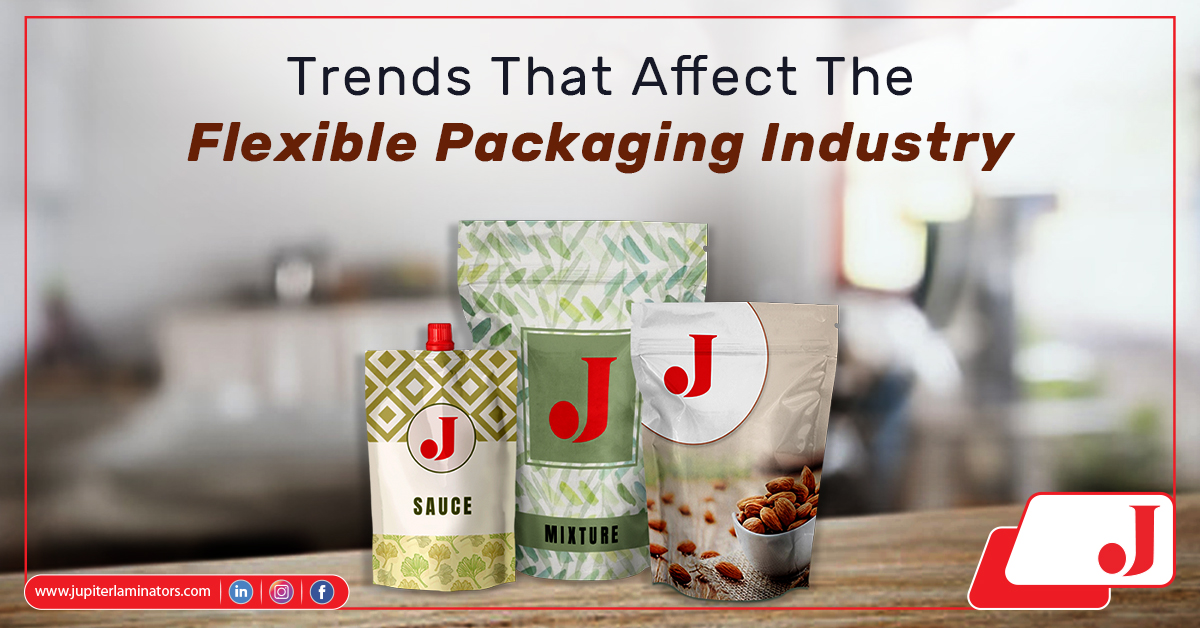The flexible packaging industry needs, for example, to remain flexible. Customer changes and trends have a significant impact on packaging innovation and its supply chain. These are some of the biggest business drivers for flexible packaging engagement.
Durability and plastic reduction
Consumers are increasingly avoiding plastics and seeing them as harmful to the world. With reduced materials and environmentally friendly packaging materials, flexible packaging means durability and less environmental impact than the usual packaging formats that dominate the shelves.
E-commerce
Online grocery and supply purchases have exploded in recent years, leading to far more (and more frequent) deliveries of things that customers typically only swallow at local stores. Additional shipping charges, for quantities less than those delivered to a retailer, mean additional prices (either direct to the buyer, paid by the seller or incorporated into the retail prices). Flexible packaging significantly reduces shipping weight and even accumulates the quantity of products shipped in an equivalent volume, benefiting all stakeholders of an e-commerce business.
The comfort requirement
Our fast-paced society has no time (or patience) for anything that makes life difficult. The ultimate goal is to inspire and delight the products they use or overwhelm, and the demand for everything related to the delivery of that product (from shipping, shopping, and hauling home to Gap and Storage) must be consistent with the purpose. , and not cause frustration.Flexible packaging will shape both sides of a consumer’s interaction with a product, much simpler from ease of use to ease of use.
The flexible packaging industry needs, for example, to remain flexible. Customer changes and trends have a significant impact on packaging innovation and its supply chain. These are some of the biggest business drivers for flexible packaging engagement.
Durability and plastic reduction
Consumers are increasingly avoiding plastics and seeing them as harmful to the world. With reduced materials and environmentally friendly packaging materials, flexible packaging means durability and less environmental impact than the usual packaging formats that dominate the shelves.
E-commerce
Online grocery and supply purchases have exploded in recent years, leading to far more (and more frequent) deliveries of things that customers typically only swallow at local stores. Additional shipping charges, for quantities less than those delivered to a retailer, mean additional prices (either direct to the buyer, paid by the seller or incorporated into the retail prices). Flexible packaging significantly reduces shipping weight and even accumulates the quantity of products shipped in an equivalent volume, benefiting all stakeholders of an e-commerce business.
The comfort requirement
Our fast-paced society has no time (or patience) for anything that makes life difficult. The ultimate goal is to inspire and delight the products they use or overwhelm, and the demand for everything related to the delivery of that product (from shipping, shopping, and hauling home to Gap and Storage) must be consistent with the purpose. , and not cause frustration. Flexible packaging will shape both sides of a consumer’s interaction with a product, much simpler from ease of use to ease of use.
Sustainable development options
Consumer demand for manufacturer liability is unmatched, with roughly nine out of ten customers expecting it. And customers get their money where their mouth is, as nearly 70% pay more to support sustainability. The introduction of flexible packaging makes immediate sense for manufacturers who want to find an answer that already offers additional durability compared to several alternative formats. From material to energy consumption, the flexible packaging offers a good best answer that the old containers, more is even better: recyclable or even perishable materials will reduce the carbon footprint and will gradually delight environmentally conscious customers.
Less is more
The trend towards sustainability clearly shows that “less is more” for customers. Another trend, however, is minimalist art (again). It’s not a new style of preference theory (all of the above is new), but it’s making a comeback this year in terms of style, product, packaging, and rejection. The properties of the flexible packaging configure an understandable adaptation to minimalist aesthetics, in each case in the material composition of the packaging and also the possibility of printing a simple but profound disapproval and knowledge on the finished packaging. The simple and increasingly popular bag format continues to stand out as a brand for use on store shelves, as acceptance of the format increases.
Always stay ahead of trends
While the stand-up pouch gets tons of promotional material and visibility, there are many flexible packaging companies offering a wide variety of packaging solutions that will delight manufacturers and customers alike.

